The Majestic Continental Giant Rabbit: A Comprehensive Guide
Looking for a furry companion that's bigger than your average rabbit? Well, you've come to the right place. Get ready to meet the majestic continental giant rabbit and all of its floppy-eared charm.
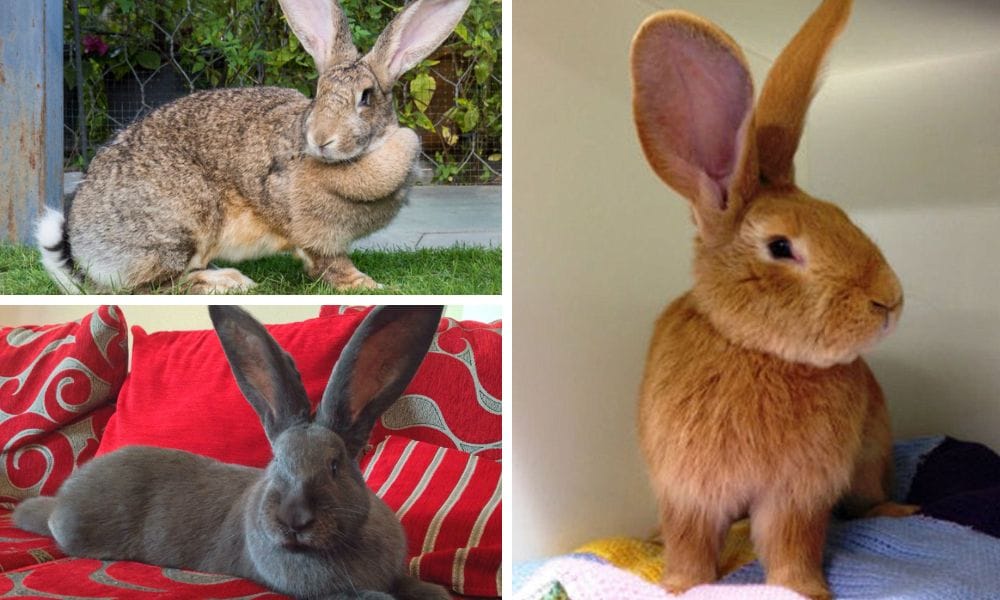
Key Takeaways:
- Understand the origins and characteristics of Continental Giant Rabbits.
- Learn about the care requirements and health considerations for these large breeds.
- Discover the role of Continental Giants in the world of rabbit enthusiasts and pet owners.
- Recognize that Continental Giant Rabbits have become popular pets due to their impressive size, friendly personality, and social nature.
Continental Giant Rabbits, often simply known as Continental Giants, are a marvel in the world of pet rabbits. These gentle giants boast an impressive size that can easily be mistaken for a small dog rather than a rabbit. Originating from Europe, these rabbits have captured the hearts of pet owners and rabbit enthusiasts alike, not just for their large size but also for their friendly and docile nature.
The Continental Giant, along with other giant rabbit breeds such as the Flemish Giants and the Belgian Giant, falls under the category of very large breeds. They are known for their long body length, which can reach up to 4 feet, and an average weight that can exceed 20 pounds. These rabbits are not just pets; they are a commitment to providing ample space, proper nutrition, and dedicated care.
The Origins of Continental Giants
The Continental Giant Rabbit has a rich history that dates back to the 16th century. These rabbits are believed to have been originally bred from Flemish Giant rabbits, with the intention of creating a rabbit breed that could provide a substantial amount of meat. However, over time, the focus shifted from breeding for meat to breeding for show quality and companionship.
The Spanish Giant is another large rabbit breed with historical significance, developed through crossbreeding with Flemish Giant rabbits, and is notable for its near-extinction and recovery efforts in Spain.
The German Giant is another line that contributed to the Continental Giant’s bloodlines. The major difference between these lines is often the size, with the Continental Giants generally being the larger of the two. Most US breeders have worked diligently to introduce new bloodlines to enhance the breed’s quality and health.
Recognized Breed Standards
The American Rabbit Breeders Association (ARBA) has not yet recognized the Continental Giant as an official breed in the USA. However, in Europe, these rabbits are celebrated and shown with pride. Breed standards for Continental Giants are strict, focusing on aspects such as body shape, coats, and ear length.
Continental Giants and Flemish Giant rabbits are known for their broad heads, which, along with their large, heavy bones, help distinguish them from other rabbit breeds. The coat of a Continental Giant is thick and soft, with guard hairs that provide a lush texture. Continental Giants have a double coat consisting of guard hairs and a soft underlayer, which requires regular grooming. Colors can vary, with some of the most common being light grey, blue, and yellow. While Flemish Giants are known for their glossy coat that is smooth and shiny with minimal grooming needs, Continental Giants have a denser, more demanding coat. Continental Giants are also recognized for their long straight ears, a notable feature shared with Flemish Giants. The breed’s large size and distinctive look make it a standout at rabbit shows and among pet owners who appreciate unique animals.
Size and Growth
One of the most striking features of Continental Giant Rabbits is their large size. Continental Giants are among the largest rabbit breeds in the world. These rabbits can grow to be much larger than most rabbits, with some individuals tipping the scales at over 20 pounds. Their growth is rapid, especially during their young age, which requires owners to be vigilant about their diet and housing.
The large size of these rabbits also means they need ample space to move around. A small hutch won’t do for these giants; they need a large enclosure or a dedicated room in the house where they can roam freely without the risk of injury.
One of the key differences between Continental Giants and other large breeds is their exceptional size and rapid growth rate.
Diet and Nutrition
Feeding a Continental Giant Rabbit is not the same as feeding most rabbits. Their large size means they have greater nutritional needs, especially in terms of fiber and protein. A diet consisting of fresh hay, quality pellets, a variety of vegetables, and fresh greens is essential for their well-being.
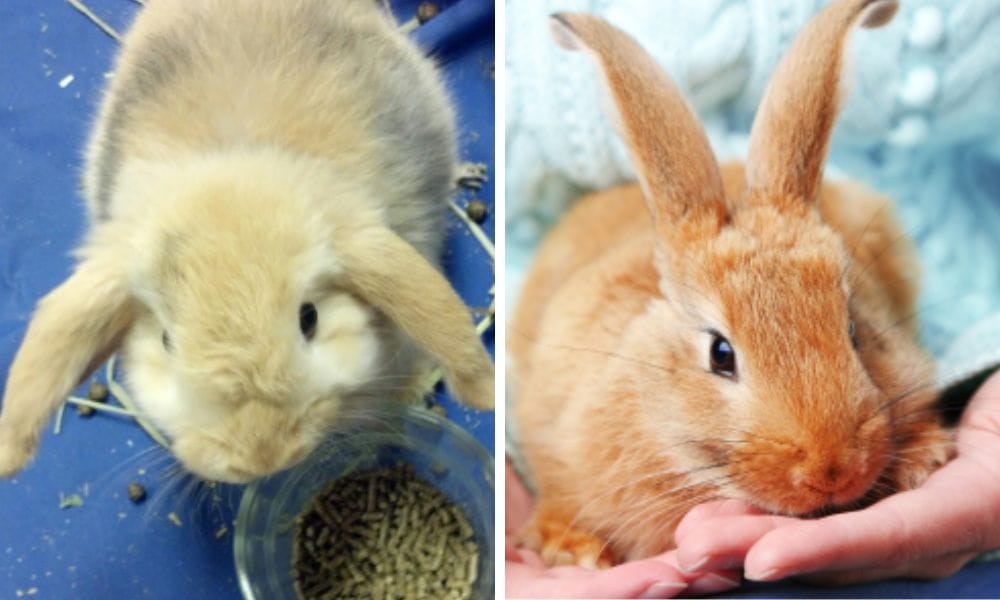
Owners should also provide treats like fruits and willow trees branches in moderation. Overfeeding can lead to obesity, which is a significant health risk for these large breeds. Maintaining a healthy weight is important for Continental Giants to promote overall health and reproductive success. Monitoring their food intake and ensuring they have a balanced diet is crucial.
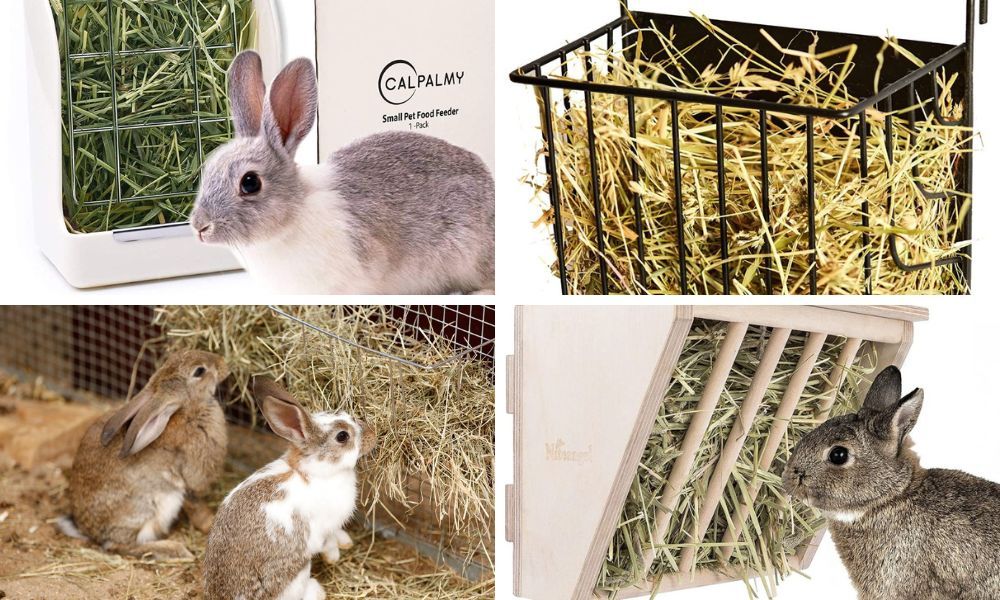
Health and Longevity
The average lifespan of a Continental Giant Rabbit is around 4 to 7 years, although some can live longer with proper care. Like all large breeds, they are prone to certain health issues such as sore hocks, which occur when the rabbit’s hind legs become irritated from resting on hard surfaces. Large rabbit breeds like the Continental Giant have specific health requirements, including ample space, a balanced diet, and regular grooming to maintain their well-being and prevent common health issues.
Common health concerns for Continental Giants include heat stress, sore hocks, arthritis, and cardiovascular conditions. To prevent such conditions, pet owners should provide soft bedding and regularly check their rabbit’s feet for any signs of discomfort. Regular veterinary check-ups are also essential to monitor their health and catch any issues at an early stage. Preventative measures, such as routine health checks and maintaining a proper diet, are important to help prevent common health issues.
Large rabbit breeds, including Continental Giants, can be prone to heart problems such as dilated cardiomyopathy, so monitoring heart health through veterinary examinations is important.
Interaction with Other Pets
Have you ever wondered how these gentle giants get along with other household pets? Well, the Continental Giant, often referred to as a ‘Conti’, is known for its docile and amiable nature, which can make it a great companion for other animals. However, due to their very large breed size, it’s crucial to supervise initial interactions. These bunnies can be quite sociable, but just like any other animal, individual personalities can vary. It’s important to ensure that other pets don’t see the rabbit as prey, which means slow and careful introductions are key.
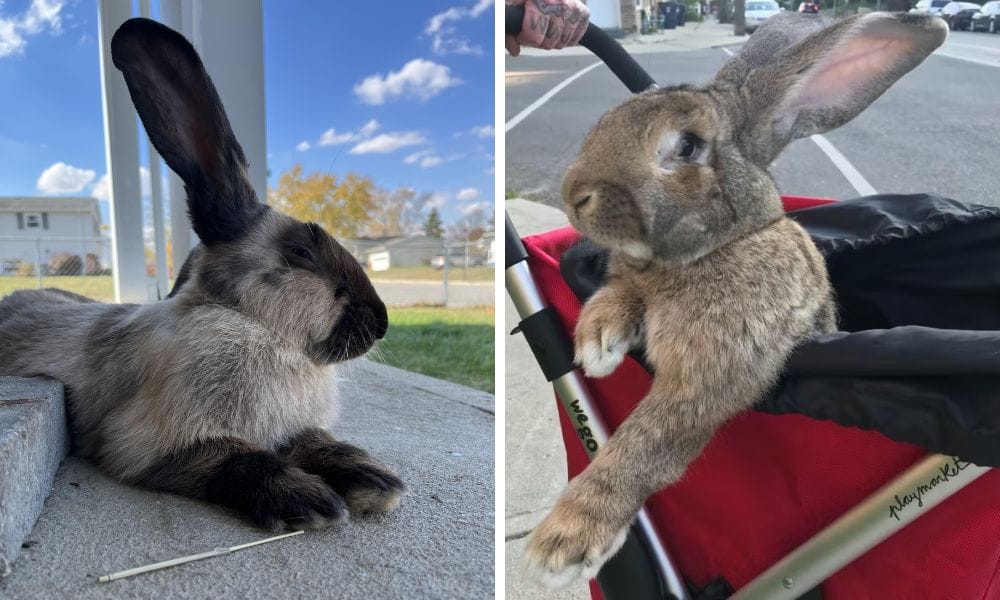
When introducing a Continental Giant to, say, a family dog, observe their body language closely. Just as different dog breeds have varying temperaments, individual rabbits also have unique personalities that affect how they interact with other pets. A relaxed rabbit may approach with curiosity, ears forward and head low, signaling interest. On the other hand, a dog should be calm and non-threatening. Some owners have found that their Conti becomes part of the collective group of pets, often forming strong bonds with their furry housemates. Always remember that safety comes first, and establishing a peaceful multi-pet household takes time and patience.
The Fascinating Comparison: Continental Giants vs. Flemish Giants
Have you ever wondered how the Continental Giant stacks up against its cousin, the Flemish Giant rabbit? Both are indeed impressive members of the giant breed family, but they have distinct characteristics that set them apart. The Flemish Giant rabbit, known for its amiable nature and history as a utility breed, has been around since the 16th century. Originating from Belgium, these large rabbits were initially bred for their fur and meat. Today, they are cherished as gentle giants, with a slightly less imposing stature than the Continental Giant, yet still boasting considerable size and weight that can awe any rabbit enthusiast.
In contrast, the Continental Giant, despite sharing a common ancestry with the Flemish Giant rabbit, has been selectively bred to achieve even greater sizes. It’s not uncommon for a Continental Giant to tip the scales at over 20 pounds, making them the larger of the two breeds. While both breeds are known for being even tempered and exhibit a calm and docile temperament, making them excellent pets, the Continental Giant’s sheer size requires more space and stronger enclosures. Their size difference is a key difference for potential owners to consider, especially when it comes to housing and exercise needs.
The Environmental Needs of Large Rabbits
When it comes to the environmental needs of large rabbits like the Continental Giant, it’s essential to understand that space is a premium. These aren’t your average bunnies that can hop around in a small hutch. They require ample room to move, stretch, and play to maintain their physical health and mental well-being. A large, secure enclosure that protects them from predators and harsh weather is a must. It should be large enough to accommodate their size, with areas designated for sleeping, eating, and litter training. Other large rabbit breeds also require similar spacious accommodations due to their considerable size and activity levels.
Moreover, the enclosure should be enriched with toys and structures that encourage natural behaviors such as digging, foraging, and hiding. This not only keeps your large rabbit entertained but also helps to prevent boredom-induced behavioral issues. Remember, a happy rabbit is an active rabbit, and with the Continental Giant’s size, ensuring they have an environment that stimulates their curiosity is crucial. Think of their space as a ‘rabbit playground’ that caters to their unique size and needs.
The Importance of Regular Veterinary Care for Large Rabbits
Regular veterinary care is paramount for the health of any pet, and large rabbits like the Continental Giant are no exception. Due to their size, these rabbits may be prone to certain health issues that require professional attention. It’s advisable to find a vet who is experienced with large rabbit breeds to ensure your pet receives the best possible care. Different breeds of rabbits have unique health needs, so specialized veterinary knowledge is important for addressing the specific requirements of each breed. Regular check-ups can help catch any potential health problems early on, which is especially important for large rabbits that may not always show clear signs of distress.
In addition to routine health checks, your vet can provide valuable advice on diet, exercise, and general care tailored to your large rabbit’s specific needs. They can also guide you on how to properly handle your rabbit to avoid injuries, given their substantial size and strength. Establishing a good relationship with a knowledgeable vet is a cornerstone of responsible large rabbit ownership, ensuring your gentle giant stays healthy and happy for years to come.
The Giant Leap: Understanding the Growth of Large Rabbits
When it comes to raising a giant breed like the Continental Giant, understanding their growth patterns is crucial. These large rabbits don't reach their full size overnight. Instead, they have a prolonged growth period that can extend up to 18 months. During this time, their diet and nutrition play a pivotal role in ensuring they develop properly without encountering health issues such as obesity or skeletal problems. A balanced diet rich in fiber, primarily from hay, alongside a controlled intake of pellets and fresh vegetables, is essential for their well-being.
Moreover, the growth rate of these large rabbits can be astonishing. For instance, a Continental Giant can grow to be about four times the size of an average domestic rabbit. This rapid and substantial growth demands not only a nutritious diet but also ample space to move and exercise. Without adequate room to hop and stretch, these gentle giants can suffer from muscle atrophy or other health complications. Prospective owners must be prepared to provide a spacious environment that accommodates the unique needs of these colossal companions.
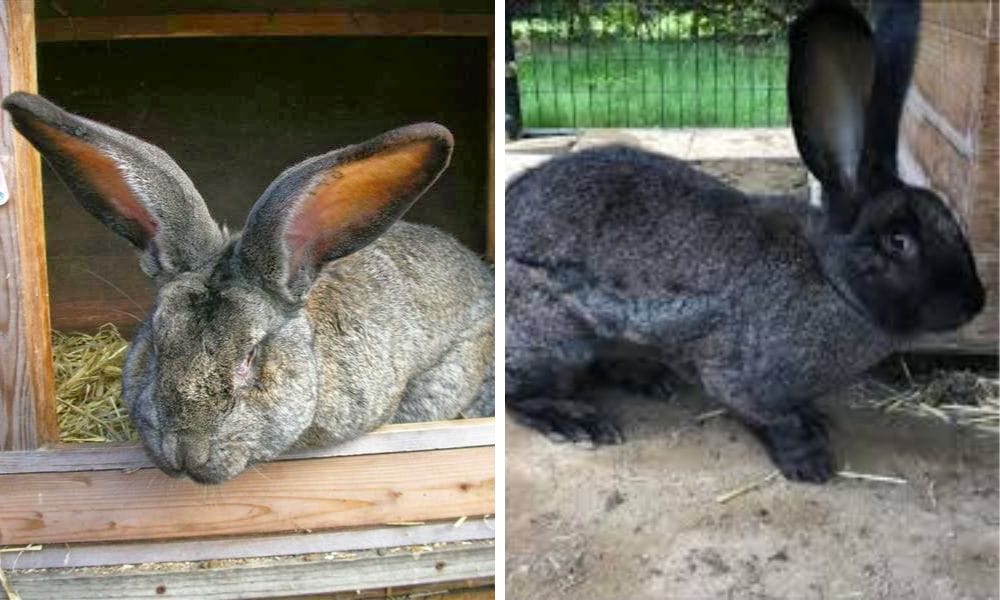
The Role of Breeders in Giant Rabbit Care
Breeders play a pivotal role in the life of Continental Giants, from the moment these large rabbits are born. A reputable breeder is not just someone who provides you with a bunny; they are a wealth of knowledge and support for the rear end of your rabbit’s care. They can offer advice on everything from diet to socialization, and they often keep in touch to see how their bunnies are doing in their new homes. When looking for a Continental Giant, it’s essential to find a breeder who is experienced with giant breeds and prioritizes the health and well-being of their animals.
Moreover, breeders are the custodians of the breed’s future. They make careful decisions about breeding pairs to maintain the health and characteristics of the Continental Giants, such as their impressive size, distinctive ears, and gentle temperament. By choosing other lines of the breed with care, breeders work to prevent genetic issues and promote the overall health of these large rabbits. A good breeder will also ensure that the bunnies are well-socialized and accustomed to human interaction, setting the stage for a well-adjusted and happy pet. Early socialization is especially important for the emotional well-being and adaptability of Continental Giants, helping them thrive in family environments and get along with other pets.
Housing and Exercise
Continental Giants require more than just a standard rabbit cage; they need ample space to accommodate their large size. An outdoor hutch should be sturdy and spacious, while indoor rabbits may need an entire room or a large pen.
Exercise is vital for these rabbits to maintain their health and prevent obesity. They should have daily opportunities to hop around, explore, and play, whether it’s in a secure backyard or a rabbit-proofed room indoors.
With proper housing and regular exercise, Continental Giants can make ideal family pets due to their gentle and friendly nature.
Breeding and Reproduction
Breeding Continental Giant Rabbits should not be taken lightly. These rabbits can produce large litters of babies, and the doe (female rabbit) needs special care during pregnancy and after giving birth. Prospective breeders must be prepared for the responsibility of finding homes for the offspring and ensuring they are bred ethically and with the breed's best interests in mind.
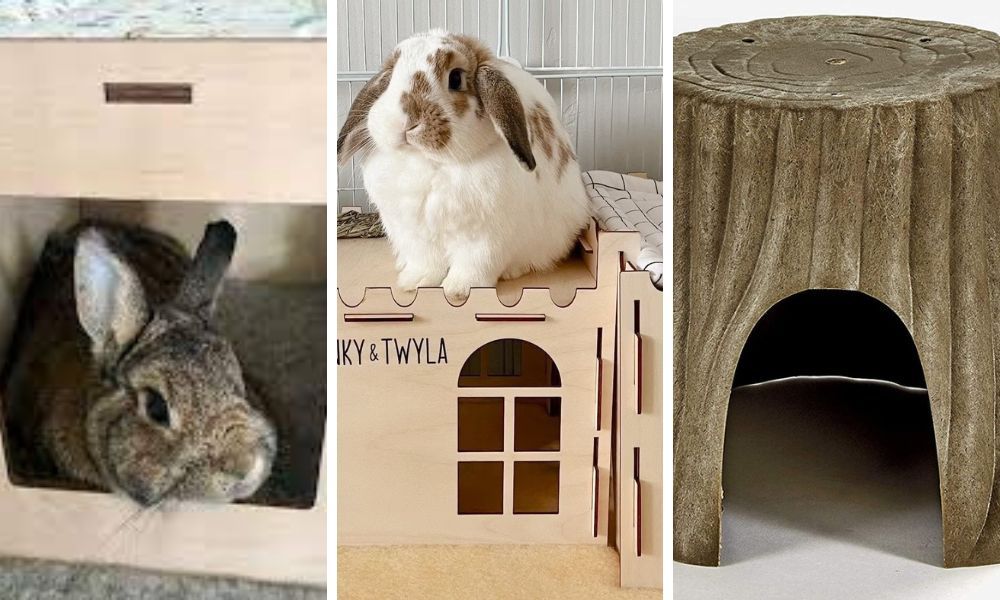
The buck (male rabbit) also plays a crucial role in the breeding process. Breeders should select bucks with desirable traits and good health to pass on to their offspring. Breeding should always be done with a focus on improving the breed and not just for the sake of having babies.
Social Behavior and Temperament
Despite their imposing size, Continental Giants are known for their gentle and friendly temperament. Their gentle nature makes them especially appealing to families and rabbit enthusiasts. They tend to get along well with people, including children, making them excellent family pets. Their affectionate and social disposition also makes them excellent companions for families and individuals. With proper care and socialization, Continental Giants can be very good pets for the right households. However, like all animals, they have their own personalities, and some may be more reserved or independent.
These rabbits can also be socialized with other pets, such as dogs and cats, provided proper introductions are made. It’s important to supervise interactions to ensure the safety and comfort of all animals involved.
Grooming and Care
Continental Giants have a thick coat that requires regular grooming to prevent matting and to keep them clean. Consistent grooming routines are especially important for maintaining coat health and addressing the specific needs of large breeds like Continental Giants. Brushing them a few times a week is usually sufficient, but during shedding season, they may need daily grooming.
Nail trimming is another essential aspect of their care. Their nails can grow quickly and may become uncomfortable or cause problems if left untrimmed. Grooming is just one aspect of the broader care requirements for Continental Giants. Pet owners should learn how to safely trim their rabbit’s nails or seek assistance from a veterinarian.
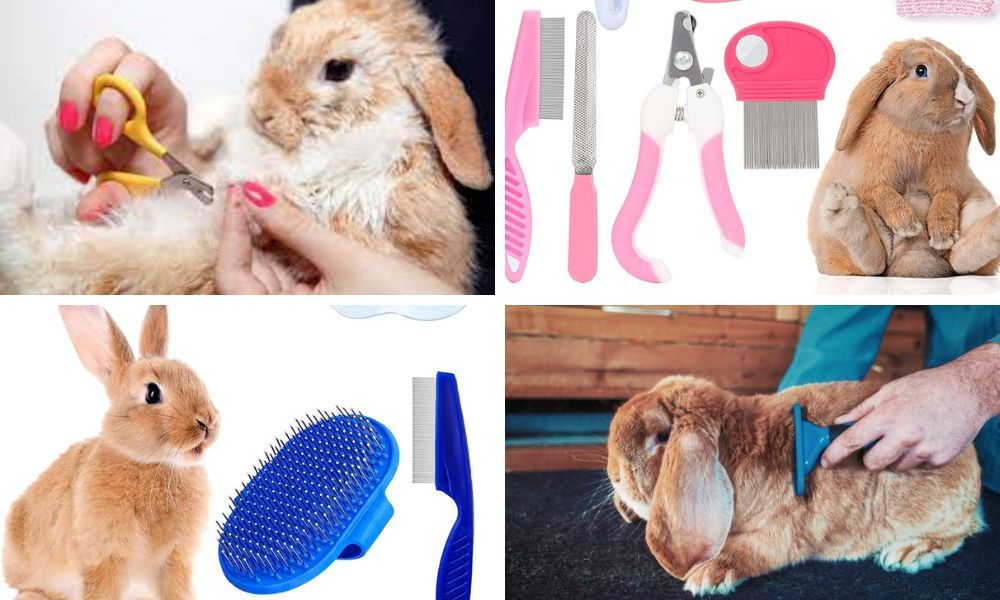
Cost and Availability of Continental Giant Rabbits
If you’re considering adding a Continental Giant rabbit to your family, it’s important to understand both the initial and ongoing costs involved. The price of a giant rabbit can vary widely depending on factors such as your location, the reputation of the breeder, and the specific bloodline of the rabbit. On average, a pet-quality Continental Giant rabbit typically costs between $300 and $500. If you’re seeking a show-quality giant rabbit with exceptional lineage, prices can climb to $1,000 or more.
Beyond the purchase price, prospective owners should budget for the monthly care of their Continental Giant. Because of their large size, these rabbits require more food, bedding, and larger enclosures than smaller breeds, with monthly expenses often ranging from $50 to $100. Veterinary care for giant rabbits can also be more specialized and, at times, more costly.
Continental Giant rabbits are relatively rare, and finding one may require patience. Availability can be limited, especially in certain regions, so it’s essential to research reputable breeders who prioritize the health and well-being of their rabbits. Be prepared to join a waiting list and take your time to ensure you’re bringing home a healthy, well-socialized giant rabbit.
Common Mistakes to Avoid
Caring for a Continental Giant rabbit comes with its own set of challenges, and avoiding common mistakes is key to ensuring your giant thrives. One of the most frequent errors is underestimating the amount of space these giants need. Continental Giants require ample space to move, stretch, and exercise—cramped quarters can lead to stress, obesity, and behavioral issues.
Another common pitfall is neglecting their diet. A giant rabbit’s nutritional needs are significant, and a diet lacking in fresh vegetables and high-quality hay can result in digestive problems and unhealthy weight gain. It’s crucial to provide a balanced diet tailored to the needs of continental giants.
Regular grooming is also essential. Their dense fur can easily become matted if not brushed consistently, leading to discomfort and potential skin issues. Make grooming a routine part of your care to keep your giant rabbit’s coat healthy and tangle-free. By providing ample space, a nutritious diet, and regular grooming, you’ll help your Continental Giant live a happy, healthy life.
Advanced Care Techniques for Continental Giants
To truly excel in caring for your Continental Giant rabbit, consider incorporating advanced care techniques that go beyond the basics. Enrich your giant rabbit’s environment with a variety of toys, tunnels, and chewable items like cardboard boxes and paper bags. These additions encourage natural behaviors such as foraging and chewing, keeping your rabbit mentally and physically engaged.
Supervised playtime outside of the enclosure is another excellent way to promote exercise and strengthen your bond with your giant. Set up a secure, rabbit-proofed area where your Continental Giant can explore, hop, and interact with you. This not only provides essential physical activity but also helps prevent boredom and related behavioral issues.
By focusing on environmental enrichment and regular, interactive exercise, you’ll ensure your giant rabbit remains active, healthy, and content.
Providing Mental Stimulation for Your Giant Rabbit
Mental stimulation is just as important as physical exercise for a Continental Giant rabbit. These intelligent giants thrive when given opportunities to explore and solve problems. Offer a variety of toys that challenge their minds, such as treat-dispensing puzzle toys or sensory items with different textures and scents.
Creating a rabbit agility course is another fun way to engage your giant rabbit. Use tunnels, ramps, and low jumps to encourage exploration and movement. Not only does this provide essential exercise, but it also keeps your rabbit’s mind sharp and helps prevent boredom.
Regularly rotating toys and introducing new activities will keep your Continental Giant rabbit curious and entertained, contributing to their overall well-being and happiness.
Creating a Rabbit-Friendly Home
Designing a rabbit-friendly home is crucial for the safety and happiness of your Continental Giant rabbit. Start by providing a secure, spacious enclosure that offers plenty of ventilation and natural light. The enclosure should be sturdy and escape-proof, protecting your giant rabbit from potential hazards and predators.
Rabbit-proofing your home is equally important. Remove or secure any toxic plants, electrical cords, and small objects that could be chewed or swallowed. Block off areas that may be unsafe or inaccessible to your rabbit, ensuring they have a safe environment to explore.
By taking these steps, you’ll create a welcoming, secure space where your Continental Giant rabbit can thrive as a cherished pet and member of your family.
The Joy of Owning a Continental Giant
Owning a Continental Giant Rabbit can be an incredibly rewarding experience. These rabbits have a presence that is both impressive and endearing. Welcoming a new pet like a Continental Giant into your family is an exciting journey that requires thoughtful preparation and planning. They can form strong bonds with their owners and bring a lot of joy to a household.
However, potential owners must understand the commitment involved in caring for such a large breed. From providing enough space to managing their diet and health needs, Continental Giants are not a pet for everyone. But for those who are willing to invest the time and resources, these rabbits can be a wonderful addition to the family.
Summary
Continental Giant Rabbits are a unique and captivating breed that requires dedicated care and attention. They are known for their large size, friendly nature, and specific needs in terms of diet, housing, and health. Prospective owners should be well-informed about the responsibilities of keeping such a large breed and be prepared to provide them with the love and care they deserve. With the right environment and attention, Continental Giants can be loving companions for years to come.
FAQ Section
Q: How much space does a Continental Giant Rabbit need? A: Continental Giant Rabbits require significantly more space than the average rabbit due to their large size. They need a large enclosure or a dedicated room where they can move freely and exercise.
Q: What is the average lifespan of a Continental Giant Rabbit? A: The average lifespan of a Continental Giant Rabbit is around 4 to 7 years, although with proper care, some can live longer.
Q: Can Continental Giant Rabbits live with other pets? A: Yes, a Continental Giant can be a great pet rabbit and can live with other pets like dogs and cats if proper introductions are made and interactions are supervised to ensure the safety and comfort of all animals involved.
Q: How does the Continental Giant compare to other large breeds like the Checkered Giant? A: The Continental Giant is generally larger than the Checkered Giant, with a heavier build and a calm temperament, making it a popular choice as a pet rabbit for families. The Checkered Giant is known for its distinctive markings and arched body shape, and is often seen in rabbit shows. Both breeds require spacious housing and regular grooming, but the Continental Giant may need more space and food due to its size.

